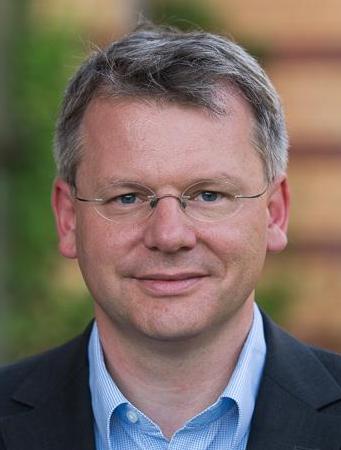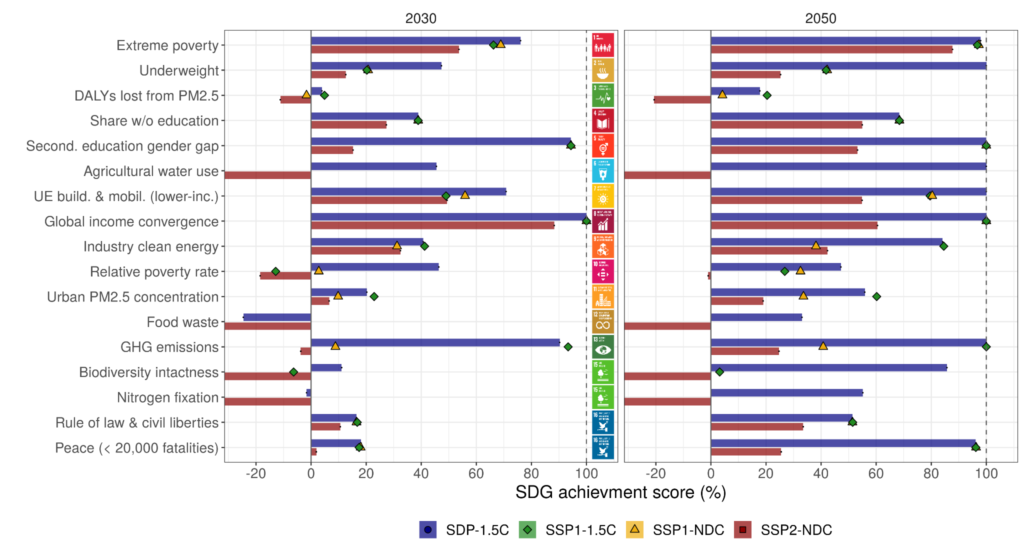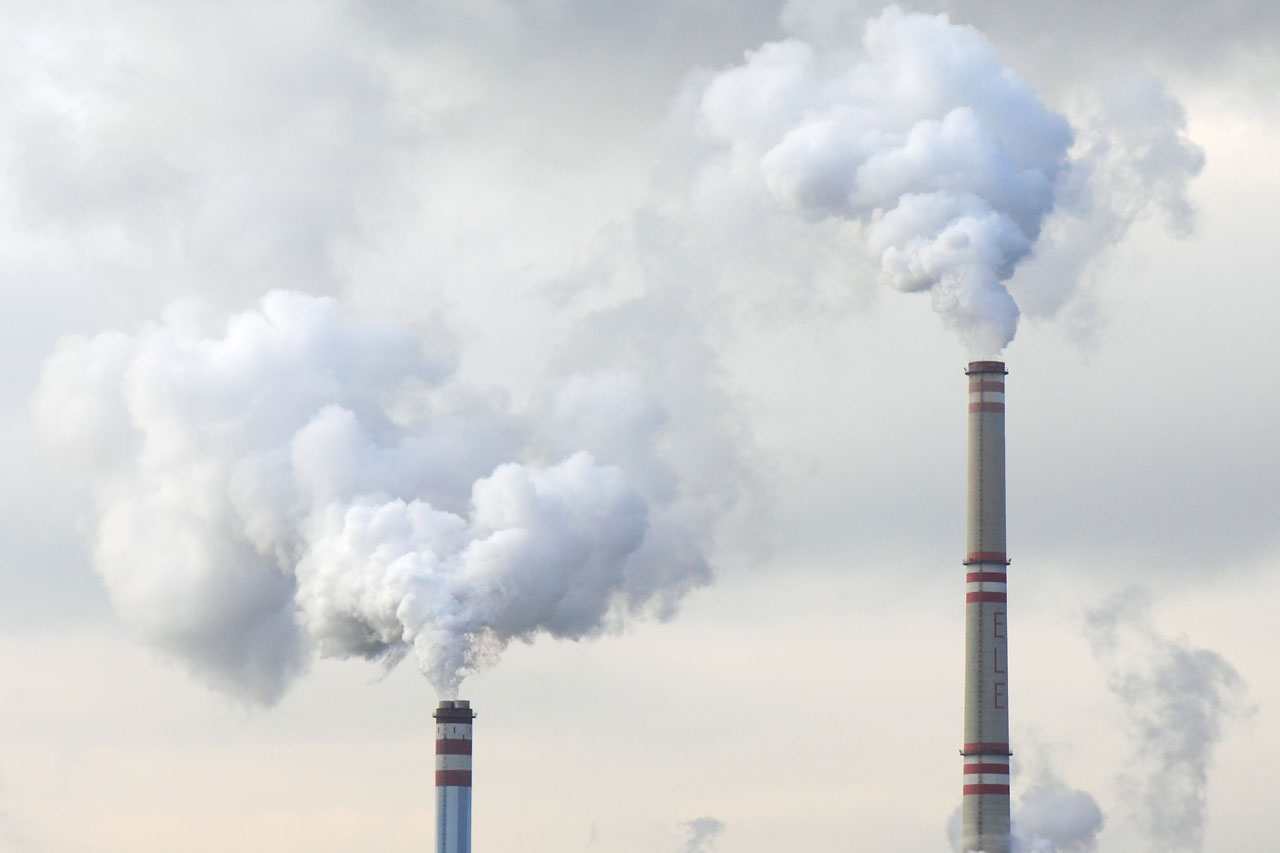About the Authors

Bjoern Soergel
Bjoern Soergel is a post-doctoral researcher at the Potsdam Institute for Climate Impact Research. He investigates how to integrate climate policies with the much broader agenda of the UN Sustainable Development Goals (SDGs), aiming to reconcile social goals like the eradication of extreme poverty with environmental sustainability. His recent work on these topics has been featured widely in German and international media. Bjoern was originally trained as an astrophysicist and has a PhD in Astronomy from the University of Cambridge.

Elmar Kriegler
Elmar Kriegler is Head of the Research Department "Transformation Pathways" at the Potsdam Institute for Climate Impact Research (PIK) and Professor for Integrated Assessment of Climate Change at Potsdam University. He received a Ph.D. in Physics from the University of Potsdam and was a Marie Curie Fellow at the Department of Engineering and Public Policy at Carnegie Mellon University in Pittsburgh. Elmar Kriegler is an expert integrated assessment of climate change, scenario analysis and decision making under uncertainty. His research focuses on the investigation of climate change mitigation and development scenarios. He has been an author of the IPCC Fifth Assessment Report and the IPCC Special Report on 1.5°C Warming and is currently serving as an author of the IPCC Sixth Assessment Report on mitigation. He has published more than 100 articles in refereed journals and was named Highly Cited Researcher in 2018, 2019 and 2020.
With the adoption of the Paris Agreement and the UN Sustainable Development Goals (SDGs) in 2015, world leaders have set an ambitious agenda for tackling the climate crisis and enabling human well-being within environmental limits. However, so far they clearly have not delivered on this agenda. Greenhouse gas emissions have continued to rise instead of falling rapidly as required for reaching the Paris targets, and the planetary boundaries on biodiversity loss and nitrogen fertilizer use may already have been crossed. At the same time, the progress on eradicating extreme poverty – here defined by the international poverty line of $ 1.90 per day (measured in 2011 purchasing power parity dollars) – has been by far too slow to meet the target of zero poverty in 2030 set by the SDGs. And this had been the case even prior to the economic shock caused by the COVID-19 pandemic.
All of this highlights that a continuation of the current, at best incremental, policies to tackle these global environmental and social crises, will no longer be sufficient. Instead we need an ambitious and integrated strategy to tackle them jointly. In a new study, published recently in Nature Climate Change, we have spelled out the cornerstones of such a strategy, and quantified their effects on climate and sustainable development outcomes.
Price CO2 and other greenhouse gases, at a level compatible with the 1.5°C target from the Paris Agreement, and in a globally equitable way. This could be achieved by differentiating emission prices by the income level of countries. While industrialized countries would need to charge high emission prices (around 200 $/t CO2 by 2030) reflecting their technological and financial capability, low-income countries could start with a much lower price level (around 30 $/t CO2) in order to avoid detrimental side effects on economic development. Over time, the emission prices could then converge to a globally uniform level to ensure cost-efficient mitigation in the long term.
Redistribute the revenues in a progressive way. As argued previously in our own research and by others in a contribution to this blog, carbon pricing not only reduces emissions, but also raises revenues that can be used for compensating low-income households for higher energy and food prices. As low-income households typically have smaller carbon footprints than richer households, already an equal-per-capita “climate dividend” – where each citizen receives the same amount e.g. in the form of an annual cheque from the government – would turn them into net winners of climate policy and redistribution in many countries.
Support low-income countries through international climate and development finance. Besides the national redistribution, we also propose to set aside part of the revenues from emission pricing in industrialized countries for international climate and development finance. This recognizes the historical responsibility of industrialized countries, and would comply with and extend their climate finance commitments made during the UNFCCC negotiations. At the same time, it would foster global collaboration by addressing the development needs of the Global South alongside climate action. In the recipient countries, these funds could be spent on poverty alleviation policies alongside the revenues from domestic emission pricing (as assumed in our study), or also to fund much-needed investments into education, healthcare or infrastructure supporting the SDGs.
Enable healthy and sustainable nutrition and access to modern energy services for all; reduce energy consumption in high-income countries. For low-income countries this puts the focus on ending hunger and malnutrition, as well as on providing sufficient energy to eradicate multidimensional poverty. For high-income countries this requires a dietary transition towards less meat and dairy consumption, for example according to the “Planetary Health” diet suggested by the EAT-Lancet commission. Similarly, a transition away from energy-intensive lifestyles in high-income countries reduces energy demands and thus facilitates decarbonization of the energy supply. Taken together, these demand-side shifts could make a substantial contribution to meeting ambitious climate targets: without them, the CO2 price required to meet the 1.5°C goal would approximately double from the values given above.
Implement technology policies and best practices for sustainable energy and land-use systems. On the energy supply side, this includes a rapid retirement of coal-fired power plants, limiting the reliance on bioenergy to avoid trade-offs with biodiversity and food production, and a push for increased market penetration of battery electric vehicles. On the land-use side, protection for biodiversity hotspots and improvements of irrigation efficiency and nitrogen use efficiency are key measures.
Fig. 1: Sustainable development indicators and their changes as a consequence of different policies.

The red bar and arrow show a continuation of current trends and policies until 2030 (2050 for bottom row); yellow denotes the effects of more optimistic socioeconomic development and higher resource efficiency. Climate policies consistent with the 1.5°C target (point 1 above) are shown in green. The blue bar and arrow show the effect of targeted redistribution and sustainable development policies (point 2-5 above). Abbreviations: “UE build. & mobil. (lower-inc.)”: Useful energy for buildings and mobility in lower-income regions.
Figure first published in Soergel et al., 2021, Nature Climate Change
It is critically important to consider climate and sustainable development targets together, as policies focused towards one target can have positive or negative side effects for others. For example, climate policies on their own lead to higher energy and food prices (Fig. 1e & f), which in turn increases inequality and poverty as a side effect (Fig. 1a & b). Through the additional national and international redistribution policies (points 2 & 3 above), such side effects can be avoided, and substantial reductions in inequality and poverty can be achieved alongside climate action. Similarly, a dietary transition towards less meat and dairy (point 4 above) has positive health effects and large co-benefits for environmental integrity (Fig. 1 g-i). It also facilitates reaching ambitious climate targets by strongly reducing methane and nitrous oxide emissions from agriculture. This in turn lowers the costs of climate policies and avoids food price increases, which is of particular importance for low-income countries.
We have also assessed how much progress towards the targets of the SDGs can be achieved by 2030 with these policies. Given the narrow time horizon and the inertia in existing systems, many targets have already become difficult to achieve (Fig. 2). For example, even under optimistic assumptions about future socio-economic development and the aforementioned redistribution policies, around 180 million people would remain in extreme poverty by 2030, and the detrimental effects of the COVID-19 pandemic on longer-term economic development (which our study did not include yet) could further increase this number. But our results also show that considerable progress is possible until 2030, especially when compared to a continuation of current trends. Furthermore, many targets can be reached or nearly reached by 2050.
Fig. 2: Overview of SDG achievement scores for 2030 (left) and 2050 (right).

Zero corresponds to the status quo in 2015, 100% denotes that the target has been fully achieved. Red bars show a continuation of current trends and policies, blue bars show the results of an integrated push towards climate and sustainable development targets as described above. Abbreviations: DALYs – Disability adjusted life years, PM2.5 – fine particulate matter (diameter less than 2.5 micron).
Figure first published in Soergel et al., 2021, Nature Climate Change
Rapid and coordinated action in response to climate change and the other ecological crises we are facing is required more than ever. But it needs to go hand in hand with targeted policies towards inequality and poverty alleviation and the much broader sustainable development agenda. Only then it can deliver on the promise of fostering human well-being while respecting the ecological limits of our planet.
For the full study, see:
Soergel, B., Kriegler, E., Weindl, I. et al. A sustainable development pathway for climate action within the UN 2030 Agenda. Nat. Clim. Chang. 11, 656–664 (2021). https://doi.org/10.1038/s41558-021-01098-3
For the link between climate change mitigation and poverty eradication, see:
Soergel, B., Kriegler, E., Bodirsky, B.L. et al. Combining ambitious climate policies with efforts to eradicate poverty. Nat Commun 12, 2342 (2021). https://doi.org/10.1038/s41467-021-22315-9






